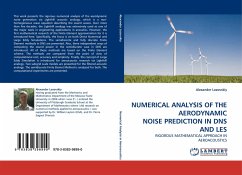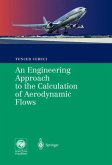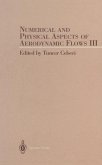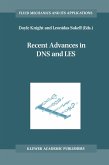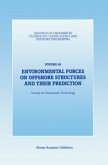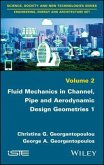This work presents the rigorous numerical analysis of the aerodynamic noise generation via Lighthill acoustic analogy, which is a non-homogeneous wave equation describing the sound waves. Over more than five decades, the Lighthill analogy was extensively used as one of the major tools in engineering applications in acoustics. However, the first mathematical research of the Finite Element approximation for it is introduced here. Specifically, the focus is on both Direct Numerical and Large Eddy Simulations. The semidiscrete and fully discrete Finite Element methods in DNS are presented. Also, three independent ways of computing the sound power in the semidiscrete case in DNS are introduced. All of these methods are based on the Finite Element scheme. The methods are compared from the point of view of computational cost, accuracy and simplicity. Finally, the concept of Large Eddy Simulation is introduced for aeroacoustic research via Lighthill analogy. Two subgrid scale models are presented for the filtered acoustic analogy. The semidiscrete Finite Elemet Method is analyzed for both. The computational experiments are presented.

